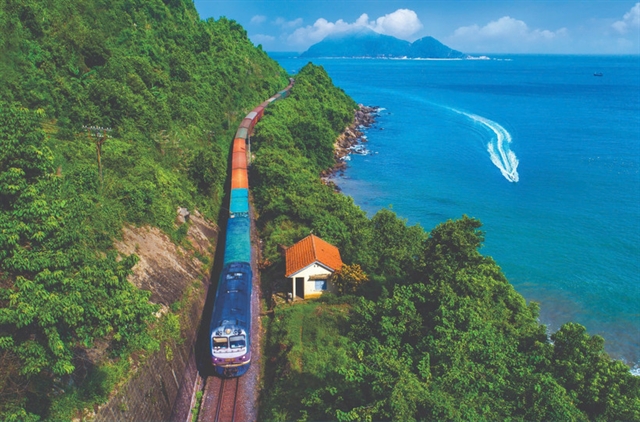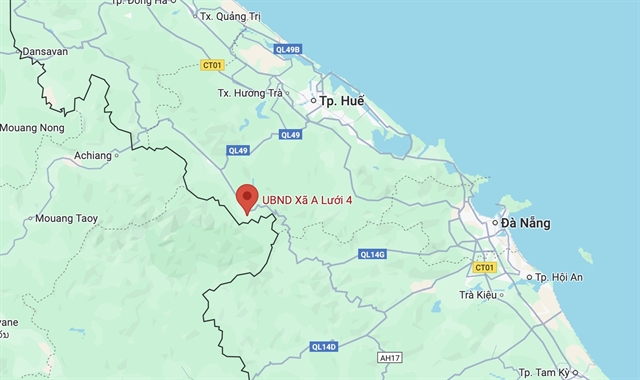 Environment
Environment

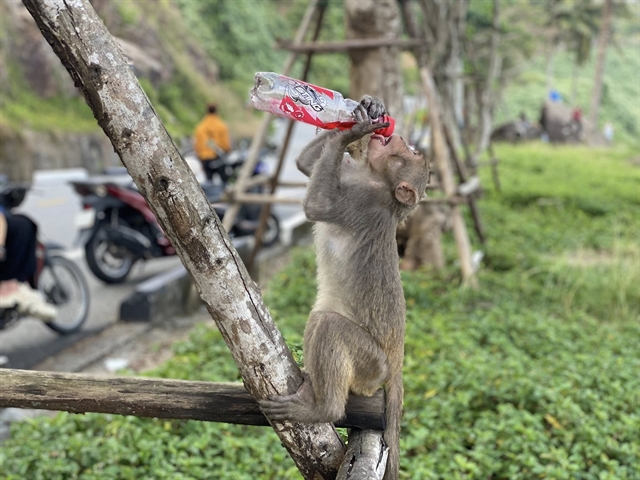 |
| A monkey drinks water from a left-over bottle at a stop in the Sơn Trà Nature Reserve in Đà Nẵng City. — Photo courtesy of Thanh Ngọc Trúc |
Công Thành
ĐÀ NẴNG — Feeding monkeys with human food has become a serious problem, with many of the herds now waiting for snacks, leftover food, drinks and even rotten fruit, salt, rice given by local residents and tourists in the Sơn Trà Nature Reserve every day.
The leftovers, some of it being waste from vendors, could lead to dangers of infection, even deaths in the monkey population, with the primates leaving the reserve and causing chaos in the popular tourist destination in the central city of Đà Nẵng.
One problem is rabies. Although there has yet to be any case of rabies transmission from monkeys to humans, visitors have been scratched and bitten and needed rabies vaccinations.
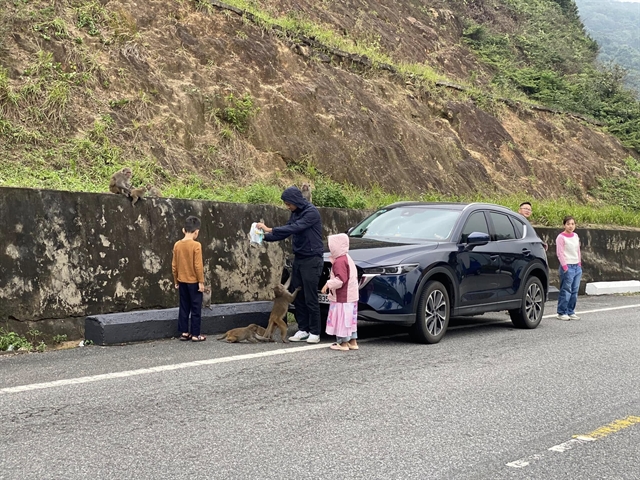 |
| Visitors bring snacks and biscuits to feed monkey at a stop in the Sơn Trà Nature Reserve in Đà Nẵng City. — Photo courtesy of Ngọc Trúc |
Local volunteer Thanh Ngọc Trúc, who has been working in the protection of the monkeys in the reserve since 2016, said about 40 per cent of visitors were found giving monkeys snacks, candies, and biscuits at Linh Ứng Pagoda, a popular tourist site.
Warning notices have been set up at favourite check-in sites and destinations in the reserve, however a lot of visitors still intentionally give food and snacks to monkeys as they think it’s good manners and fun for the kids, Trúc said.
No actions or fines have yet to be imposed by local rangers or environment protection agencies, on feeding the monkeys.
Another serious problem is the number of traps now being set to catch monkeys.
Miếu Đôi, a Temple on Hoàng Sa Street, and the Bàn Cờ (Chess Board) Mount are two locations where monkeys often gather in groups to get food from travellers and local people, Trúc said.
“I myself witnessed at least 20 cases when adults and kids were bitten by monkeys snatching food from visitors. Also, dozens of monkeys either were killed or suffered serious injuries from hitting cars and motorbikes when they crossed the road to get food,” Trúc said.
“At my daily site check, about 40 traps were found in the three hotspots of monkey-feeding, and about 45 out of 85 monkeys in the area had been missing in 2024-25. Five other monkeys got caught in traps in late 2024, and three of them had released themselves from traps, but they suffered cuts to their limbs and other serious injuries. Only one had been rescued by local rangers and volunteers, which then had to have a limb amputated in surgery, ” she said.
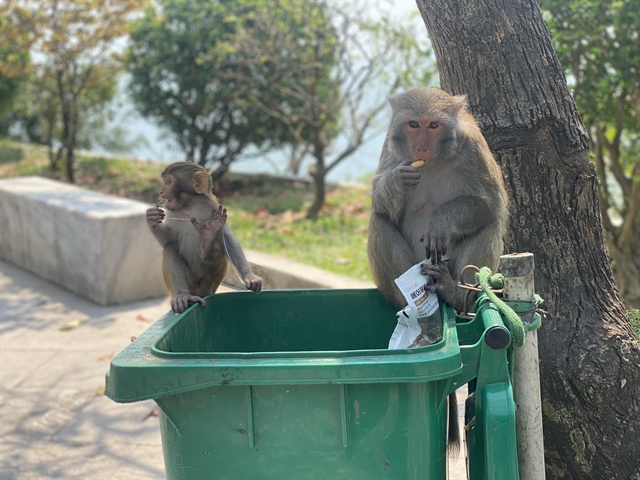 |
| Two monkeys seek out left-over food at a dust bin on roadside of the Sơn Trà Reserve. Many herds of monkey gather at check-in sites and destinations in waiting for human food given by visitors. — Photo courtesy of Thanh Trúc |
“I often bring a hand speaker to warn people not to give food to monkeys, but they (unaware visitors) still throw food at different sites, while no rangers or security forces have been assigned in the area. There were seven volunteers working with me, but they had left due to unsafe working conditions,” she explained.
The 40-year-old volunteer said in her regular checks in 2023, about 20 clam traps, or so-called the 'Jaw of Devil' snares, had been removed, while she counted at least ten monkeys who had been injured in traffic accidents or had their limbs severed in the traps.
With monkeys learning that there is plentiful food available from visitors, the harmony of natural co-existence is being threatened.
Some local households living near the Linh Ứng Pagoda and downhill of the Sơn Trà Reserve said they found monkeys breaking into gardens and kitchens seeking food, causing conflict between humans and wildlife.
Trần Hữu Vỹ, a biodiversity conservationist in Đà Nẵng, said only if the feeding of the monkeys was stopped, would they return to the forest. Scientific surveys are needed to ensure that the monkeys get back to their natural habitat in the jungle.
“If monkeys can get human food easily, they will lose their basic instincts in seeking food in nature,” Vỹ said.
He suggested that local authorities promote the communication on wildlife protection by warning tourists not to feed monkeys, with strict fines for violations in the reserve.
The Sơn Trà Reserve is managed by many different agencies, including the Sơn Trà-Ngũ Hành Sơn forest protection sub-department, Thọ Quang Ward’s administration, Sơn Trà Peninsula’s management board of Beaches and Tourism, and the Border Guard, Air Defence and Navy, but an overall management board has not been set up.
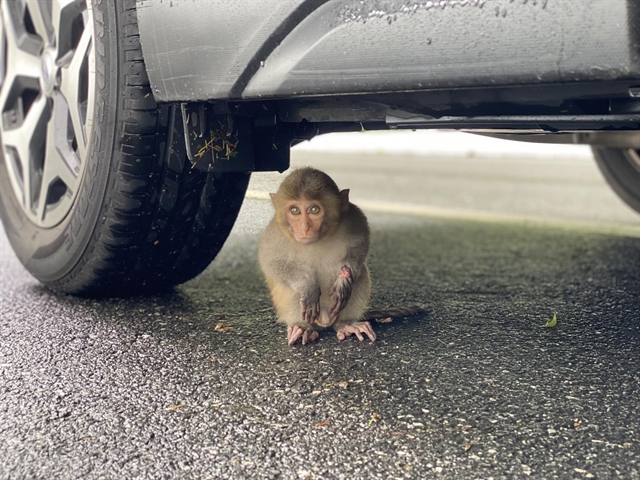 |
| A small monkey is found sitting at wheels of a parked car in the Sơn Trà Reserve. Dozens of monkeys have been killed by cars and motorbikes while crossing road in the reserve. — Photo courtesy of Ngọc Trúc |
Sơn Trà Nature Reserve is home to rhesus macaques, a species of old-world monkey, which is listed as Least Concern in the International Union for Conservation of Nature (IUCN)’s red list of threatened species.
The reserve is also home to more than 1,300 red-shanked douc langurs – an endangered primate species listed by IUCN – and more than 1,000 plant and 370 animal species, including 15 flora and 25 fauna species listed as the most threatened species in the world.
 |
| A monkey caught in a clam trap, or so-called 'Jaw of Devil', is snapped at a stop in the Sơn Trà Reserve. Several monkeys lost their limbs after being caught in traps. — Photo courtesy of Trúc Thanh |
Recently, a patrol was organised by the local tourism management to ban all vendors in the area, but giving food to monkeys has been yet mentioned.
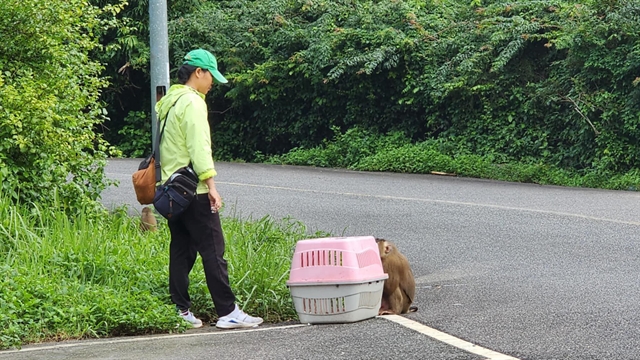 |
| Volunteer Thanh Ngọc Trúc helps release a monkey back into the wild after it was rescued and treated for limb injuries. Trúc has been working as a volunteer in the Sơn Trà Nature Reserve in Đà Nẵng since 2016. — Photo courtesy of Ngọc Trúc |
About 459 traps were found on the reserve, along with 500 illegal trespass cases after a four-month check in 2024 by the forest protection sub-department of Sơn Trà-Ngũ Hành Sơn. — VNS

